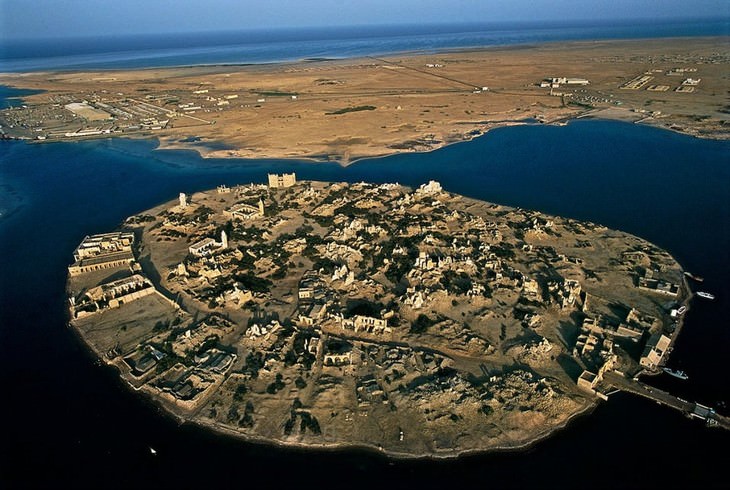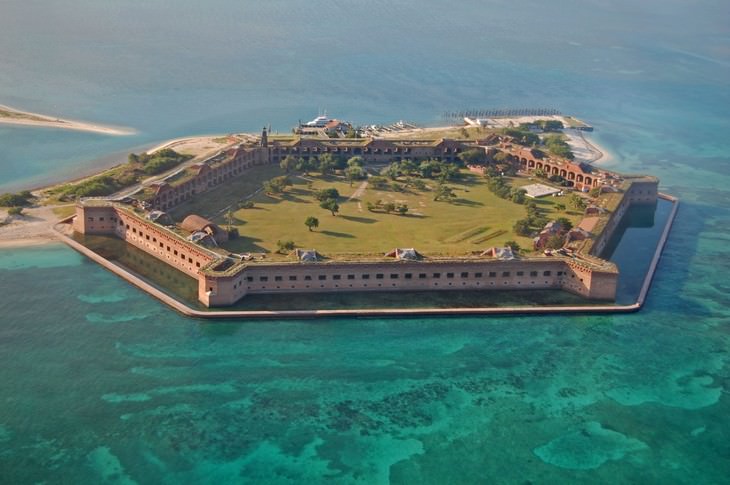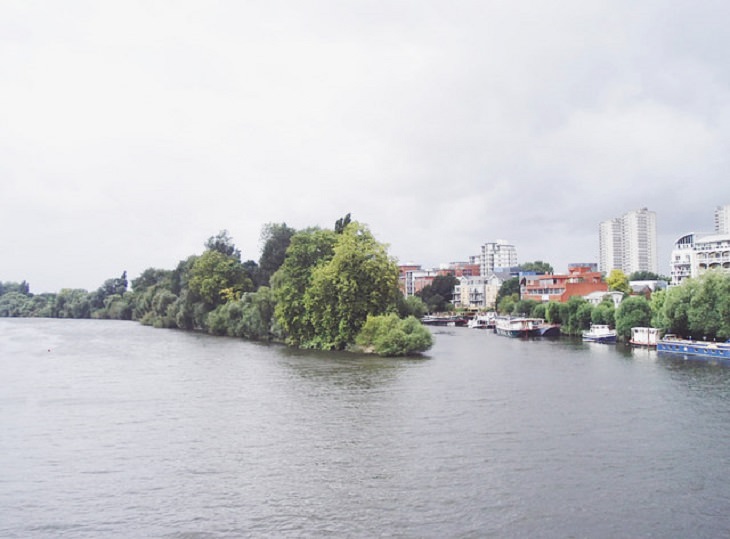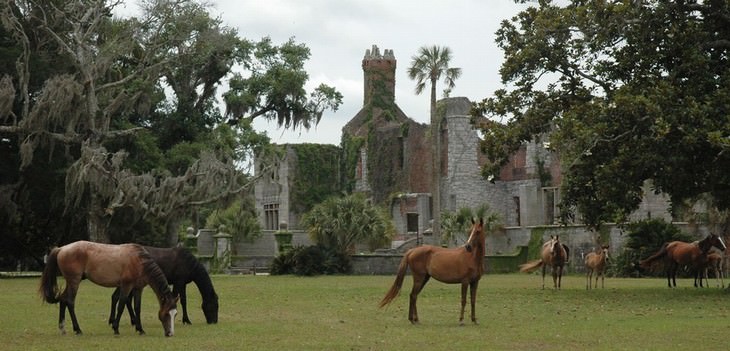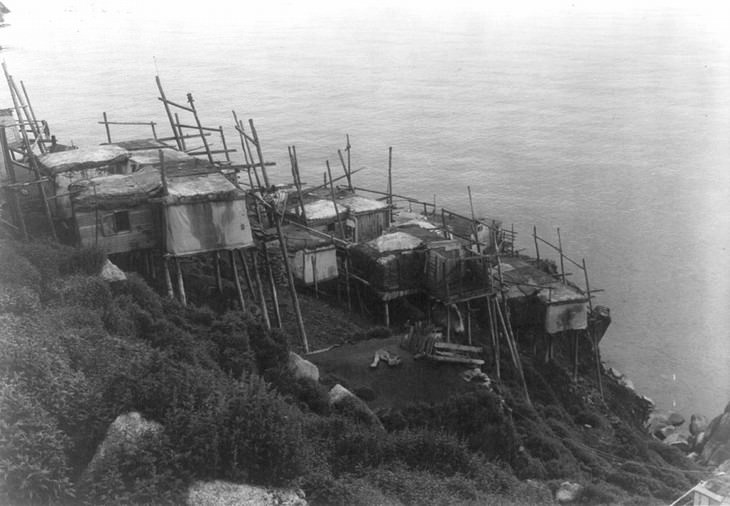1. Suakin Island, Sudan
The island of Suakin is located on the west coast of the Red Sea, in North Sudan, and it was once a crucial strategic port for several empires. The history of the port likely dates back to Ancient Egyptian times, but the peak of its splendor falls to Medieval times when the luxurious and richly decorated coral buildings were erected, and the city was one of the most important and rich ports in the Red Sea.
Subsequently, the port city became a center of the slave trade from Eastern Africa. This dark past was bound to bring about the demise of Suakin, as together with the prohibition of slavery, the once-powerful port likewise fell. The population of the city decreased rapidly in the late 19th and early 20th centuries, and the luxurious coral architecture turned into ruins that can be seen on the island to this day.
2. Ilha da Queimada Grande, Brazil
Better known as simply Snake Island, Ilha da Queimada Grande is located only 145 km (90 miles) off the coast of São Paolo, Brazil, and you likely already have a hunch as to why this island was abandoned. At the beginning of the 20th century, people tried to turn the island into a banana plantation, and signs of deforestation can be seen on the island to this day, as nearly half of the native rainforest had been burned down in preparation for the banana farm.
In 1909, a lighthouse was even constructed on the island, but rumor has it that several people who lived there to manage the island died under mysterious circumstances. These "circumstances" become less enigmatic once you realize that the island is home to approximately 4.000 golden lancehead vipers, one of the world's deadliest snake species, and these snakes completely took over the island, especially after 1985 when the island was deemed a protected ecological area.
Only visitors with special permits are allowed to enter this island of deadly snakes.
3. Deception Island, Antarctica
Once, this desolate island that is actually located right in the caldera of a volcano in the Antarctic was the center of the sealing and whaling industries, as evidenced by the remains of whaling boats seen in the photo above. During a short time at the beginning of the 20th century, several structures, such as a permanent house, a cemetery, a radio station, and even a hand-operated railway were built on the island.
In the 1930s, the first scientists started to arrive to the island, and both British and Chilean scientific teams worked here for decades and ultimately even took over the island with the decline of whaling. However, in 1967 and 1969, the volcano suddenly erupted, completely demolishing the two existing research stations. Despite the volcanic activity and harsh climate, both researchers and tourists continue coming back to Deception Island nowadays.
4. San Giorgio in Alga, Venice, Italy
The city of Venice is by far not the only noteworthy place in the area. In fact, the Venetian lagoon contains countless smaller islands, some of which have a fascinating, and often even tragic history. San Giorgio in Alga is definitely one of such islands. As a rather remote spot, the island was known among Christian monks for centuries, with a Benedictine monastery having been built on its premises around 1000 AD.
At the turn of the 18th century, a fire devastated the island and most of the buildings, so it was abandoned and subsequently used as a political prison. During WWII, San Giorgio in Alga was used as a top-secret Nazi base, where soldiers were taught to plant water mines against the enemy - the last known record of the island's human habitation. Today, tourists are allowed to visit, but most remnants of the religious and military activities that took place there are now gone.
5. Dry Tortugas, Key West, Florida
Discovered and named by Spanish explorer Ponce de Leon in 1513, the islands of Dry Tortugas were once a strategic shipping corridor, and later became the location for the famous Fort Jefferson. Construction on the fortress began in 1846, and despite never been finished, Fort Jefferson was used to fight pirate activity and later, to incarcerate Civil War prisoners and deserters.
By 1874, the former navy base was completely abandoned, though, and later given the title Fort Jefferson National Monument by President Franklin D. Roosevelt. Today, this large brick masonry structure in the Americas is part of the Dry Tortugas National Park.
6. Brentford Ait, London, England
This long island in the middle of London is completely covered by trees today, but only in early 1811, this location was quite lively, to say the least. This is because the island was the location of the infamous Three Swans Pub, the gathering place for all sorts of criminals and other questionable guests. A century later, the rowdy pub was still remembered as ‘a great Nuisance to this parish and the Neighbourhood on both sides of the River.’
Luckily for the neighborhoods surrounding the place, one Robert Hunter bought the entire island in 1812 and closed it down... Because sometimes, an abandoned island is a quiet and happy island.
7. Ross Island, Andaman, India
Ross Island is one of those examples when you can actually see how nature envelops the last signs of civilization - walls, buildings, and paved roads - with the mangrove roots slowly wrapping around these structures. No wonder the colony is a popular tourist destination today, but who would've thought that it was a functioning fortress in the 1940s?
The history of Ross Island is quite tragic, as the place was a penal colony created in 1858 by the British colonial government in India to jail prisoners of the Indian Rebellion of 1857. The British army created lavish accommodations for themselves, complete with a cathedral, gardens, dance halls, bakeries, and pools, for which the camp got the name "Paris of the East".
This lavish lifestyle lasted for nearly a century, but in WWII, Japanese troops took over the island, and after that, the location was handed over to the Indian navy. Today, there is a small Indian army camp on the island, but the old British fortress was rightfully returned to nature.
8. Cumberland Island, Georgia, USA
Cumberland Island is the largest barrier island in the state of Georgia, and it has a rich and varied history. Today, the island is completely abandoned and turned into a National Reserve Area, with wild horses roaming the once populated gardens, streets, and yards, but only in the 1950s, the island was the holiday home of the Carnegie family, who built an enormous mansion known as the Dungeness House, the ruins of which can be seen in the picture above.
This location is by far the largest man-made structure on the island, and unfortunately, it was burned down in 1959. Before being the summer home for the rich, however, Cumberland island was a working plantation, and even before that, from the 16th to the 18th centuries, it was a Spanish and English colonial settlement, complete with a fort and other buildings that can be seen to this day. The combination of these magnificent ruins and incredible nature makes Cumberland Island a popular tourist destination.
9. Ōkunoshima Island, Japan
Today, this island off the coast of Japan is mostly populated by rabbits, but why is that, and where did these rabbits come from, anyway? It turns out that the island was the location of a chemical weapons plant of the Japanese Imperial Army producing poison gas between 1929 and 1945. Ultimately, the location was uncovered and taken down by the Allied Occupation Forces, and the lab animals found in the plant were set free - hence all the rabbits.
For decades, the story of the island of Ōkunoshima was kept secret, but in 1988, the island was opened up for visitors, complete with the Ōkunoshima Poison Gas Museum and hundreds of cottontails hopping all over the old factory ruins, who definitely became the island's main attraction.
10. Ukivok Village on King Island, Alaska
The King Island in Alaska has a harsh and relentless climate, but it, too, used to be populated by the local Ukivokmiut people, who built tall hillside houses on stilts made with hide and fabric covers, as seen in this vintage photo of the Ukivok village made around 1927.
This specific village was home to about 300 inhabitants, who only spent the winter in these homes. The village was abandoned in the mid-1900s when the Bureau of Indian Affairs closed down the only school near the village, and children were forced to move to mainland Alaska. Without the support of the young generation, the entire village could no longer sustain their hunter lifestyle and had to abandon their homes.
Interestingly enough, it has been reported that these flimsy-looking houses still stand to this day, and scientists have been trying to facilitate the return of the Ukivokmiut people to their native lands in the past few years.

